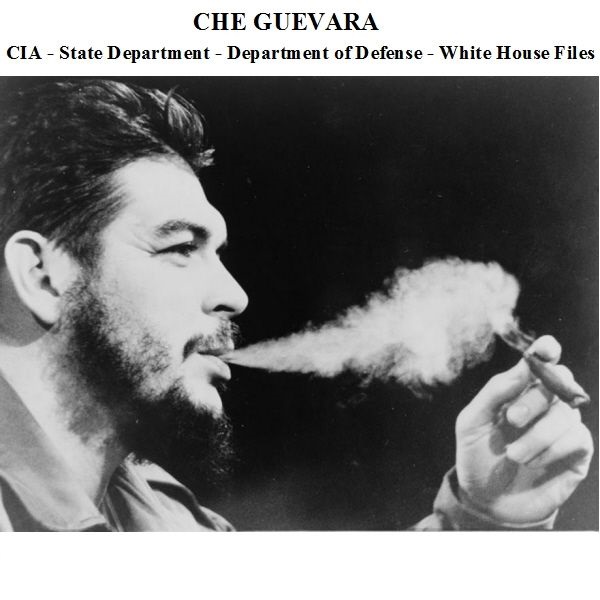
Che Guevara: CIA – State Department – Department of Defense White House Files
$19.50
Description
Che Guevara: Timeline
Timeline of Events
- May 14, 1928: Ernesto Rafael Guevara de la Serna (Che Guevara) is born in Rosario, Argentina.
- 1948: Guevara enters the University of Buenos Aires to study medicine.
- 1959: The “26th of July Movement,” led by Fidel Castro and including Che Guevara, takes control of Cuba. Guevara is assigned to oversee executions at La Cabana prison.
- 1959 – 1963 (Believed): Approximately 500 men are killed under Che Guevara’s watch at La Cabana prison.
- 1959 – 1975: Period covered by CIA files related to Che Guevara, showing his role in the Cuban Revolution, the CIA’s assessment that he brought communism to Cuba, critiques of his economic management, alleged splits with Fidel Castro, and his efforts to export revolution to other Latin American countries.
- August 1963 & January 1964: The National Security Council’s Special Group on counter-insurgency approves financial support to the MNR party of Bolivian President Victor Paz Estenssoro.
- 1964 – 1968: Period covered by State Department text transcripts dealing with U.S. foreign relations with South America, Central America, and Mexico, including events related to Che Guevara’s hunt in Bolivia.
- 1964: Coup d’état in Brazil.
- November 4, 1964: Bolivian President Victor Paz Estenssoro is ousted in a military coup led by his Vice President, General Rene Barrientos Ortuno.
- February 1965: The 303 Committee authorizes a financial subsidy to the MNR under Barrientos in Bolivia.
- May 1965: The Bolivian regime postpones the presidential election.
- July 1965: The 303 Committee agrees to provide additional financial support to the MNR in Bolivia, despite State Department criticism.
- 1966: Coup in Argentina. Che Guevara leaves Cuba with the intention of fostering revolutions in Latin America and Africa.
- March 1966: Additional funds are authorized for MNR propaganda and political action in Bolivia.
- July 1967: Rene Barrientos wins the presidential election in Bolivia.
- March 1967: Bolivian President Barrientos requests U.S. assistance in finding Cuban-led guerrilla forces in Bolivia. The U.S. agrees to train and equip a Bolivian ranger battalion.
- May 1967: The CIA reports that the guerrillas in Bolivia are led by Che Guevara. Walt Rostow informs President Lyndon B. Johnson, who maintains a strong interest in the situation.
- June 1967: The U.S. Department of Defense sends a Special Forces team (Green Berets) to Bolivia to train a second Bolivian ranger battalion in anti-guerrilla tactics. The U.S. also provides equipment and supplies. CIA contract personnel join the Bolivian rangers in the field for intelligence collection.
- October 8, 1967: The Bolivian army’s Second Ranger Battalion captures Che Guevara in La Higuera, Bolivia. CIA operative Felix Rodriguez (“Felix Ramos”) is present.
- October 9, 1967: Ernesto “Che” Guevara is executed by Bolivian soldiers on direct orders from the Bolivian Army, despite attempts by U.S. advisors to prevent the execution. Felix Rodriguez informs Guevara of his impending death. U.S. advisors provide on-scene reports to Washington.
- 1975: Latest date mentioned in the CIA files related to Che Guevara.
- 1997: The remains of Che Guevara are unburied and identified by DNA testing. They are returned to Cuba and buried with military honors on July 12, 1997.
- 2001: A US Army Military Review article titled “Che Guevara and Guerrilla Warfare: Training for Today’s Nonlinear Battlefields” is written.
Cast of Characters
- Ernesto “Che” Guevara (Ernesto Rafael Guevara de la Serna): Born in Argentina in 1928, he was a Marxist revolutionary, physician, author, intellectual, guerrilla leader, diplomat, and military theorist. A key figure in the Cuban Revolution, he later sought to spread revolution to other parts of Latin America and Africa. He was captured and executed in Bolivia in 1967.
- Fidel Castro: The leader of the “26th of July Movement” that overthrew the Cuban government in 1959. Guevara was a prominent member of this movement. The source mentions a potential split between Castro and Guevara.
- Felix Rodriguez (Felix Ramos): A CIA operative who participated in the mission to capture Che Guevara in Bolivia. He was present when Guevara was captured and claims to have informed Guevara of his execution.
- Douglas Henderson: U.S. Ambassador to Bolivia. He provided official confirmation of Che Guevara’s death.
- Victor Paz Estenssoro: President of Bolivia who received covert financial support from the U.S. to counter an “emergency situation” and consolidate his control. He was later ousted in a coup in 1964.
- Rene Barrientos Ortuno: Vice President who led the military coup against President Paz Estenssoro in 1964 and became President of Bolivia. His government also received covert U.S. financial support and requested U.S. assistance in finding Che Guevara.
- Leonid Brezhnev: Leader of the Soviet Union. The source mentions his objections to Cuba regarding Che Guevara’s mission to Bolivia, suggesting disagreements between the Soviet Union and Cuba on this matter.
- Lyndon B. Johnson: President of the United States during the period of Che Guevara’s activities in Bolivia. He maintained a strong interest in reports regarding Guevara and the Bolivian efforts to defeat his guerrilla movement.
- Walt Rostow: President Johnson’s Special Assistant. He forwarded information about the CIA’s report on Che Guevara leading guerrillas in Bolivia to the President.
- U.S. Green Berets (8th Special Forces Division): A sixteen-member team of U.S. Army special forces from Panama who trained the 2nd Battalion of the Bolivian Army in anti-guerrilla tactics specifically to seek out Che Guevara and his rebels.
Che Guevara: CIA – State Department – Department of Defense White House Files
1,231 pages of CIA, State Department, Department of Defense and White House files related to Che Guevara.
Ernesto Rafael Guevara de la Serna, also known as Che Guevara, was born in Rosario, Argentina on May 14, 1928. In 1948 Guevara entered the University of Buenos Aires to study medicine. Guevara was a member of Fidel Castro’s “26th of July Movement”, which took control of Cuba in 1959. Guevara was assigned to oversee executions at the La Cabana prison. It is believed that from 1959 to 1963, approximately 500 men were killed under his watch. Guevara left Cuba in 1966 with the intention of fostering revolutions throughout Latin America and Africa. After being captured in Bolivia, Ernesto “Che” Guevara was put to death by Bolivian soldiers, trained by U.S. Green Beret advisors and CIA operatives, on October 9th, 1967. In 1997 the remains of Guevara’s body were unburied and identified by DNA testing. The remains were returned to Cuba were he was buried with military honors on July 12 1997.
CIA FILES
389 pages of CIA files. Files date from 1959 to 1975. Files show Che Guevera’s role in Castro’s revolution. Files show the CIA credited Guevara for bringing communism to Cuba. A report gives the CIA’s critique of Guevara ability to run the Cuban economy. Memos account a split between Fidel Castro and Che Guevara. Mentions are given to Guevara’s exporting of revolution to Dominican Republic, Haiti, Guatemala. Honduras, and Nicaragua. Material includes a CIA book review of the diary of Che Guevara. Memos document disagreement between the Soviet Union and Cuba, files chronicle Soviet Union leader Leonid Brezhnev’s objections made to Cuba over Che Guevara’s mission to Bolivia.
Files include a CIA debriefing of CIA operative Felix Rodriguez. When Guevara was executed in La Higuera, Bolivia, Rodriguez, under the code name “Felix Ramos” was present. Rodriguez gives details of his mission to help with the capture of Guevara. Rodriguez told his debriefers that it was he who informed Che Guevara that he was to be executed.
Department of State Files
801 pages of State Department material.
Includes 20 pages of memos. Memos include: An official confirmation from Douglas Henderson, U.S. Ambassador to Bolivia, of the death of Che Guevara. A written account of autopsy reports and fingerprint analysis conducted by Argentine police on Guevara’s amputated hands. A State Department analysis of the meaning of the death of Che Guevara for Latin America.
Includes the text of 781 pages of State Department text transcripts of Department of State, White House, CIA, Department of Defense, and National Security Council documents dealing with U.S. foreign relations with South America, Central America, and Mexico from 1964 to 1968, compiled by the Office of the Historian of the United States Department of State.
The volume features eleven bilateral and two regional compilations, demonstrating the breadth of the U.S. Government’s relations with the countries of South and Central America. Many of the bilateral compilations document the Lyndon Johnson administration’s responses to a series of crises: the 1964 Panama Canal flag incident; the 1964 coup d’etat in Brazil; the 1964 presidential election in Chile; the 1966 coup in Argentina; the 1967 hunt for Ernesto “Che” Guevara in Bolivia; the 1968 coups in Peru and Panama. The bilateral compilations also show how the administration tried to address more fundamental problems: the Panama canal treaty negotiations; the insurgencies in Ecuador, Peru, and Venezuela; the authoritarian regimes in Brazil and Argentina; the continuation of covert political support in Bolivia and Chile; economic assistance in Brazil, Colombia, and Chile; and the protection of American business interests in Venezuela, Argentina, Peru, and Chile.
The compilation on Bolivia concentrates on two issues: covert subsidies to the MNR party and the hunt for Ernesto “Che” Guevara. In August 1963 and January 1964, the National Security Councils’s Special Group on counter-insurgency approved two requests for financial support to the party of President Victor Paz Estenssoro. The purpose of the program was to “overcome the emergency situation which existed in Bolivia at that time and, once the situation normalized, to enable Paz to consolidate his control.” On November 4, 1964, Paz was ousted in a military coup d’etat by his Vice President, General Rene Barrientos Ortuno. Three months later, the 303 Committee authorized a financial subsidy to the MNR under Barrientos to help establish an organizational base for the Presidential election scheduled for September. After the regime postponed the election in May 1965, the 303 Committee agreed in July to provide additional financial support, in spite of criticism from the Department of State. The Committee’s Executive Secretary admitted that there was “no magic formula,” but recommended “working along with Barrientos as the only semi-competent available.” Additional funds were authorized in March 1966 for MNR propaganda and political action in support of the ruling Junta’s plans to pacify the country and hold elections to establish a civilian, constitutional government. Barrientos won easily when the election was held in July, and officials concerned with the covert operation concluded that the objectives of the program had been accomplished.
In March 1967, Barrientos requested U.S. assistance in the search for Cuban-led guerrilla forces operating in Bolivia. The United States agreed to help train and equip a Bolivian ranger battalion for this purpose. In May, the CIA reported that the guerrillas were led by Che Guevara, and Walt Rostow, the President’s Special Assistant, forwarded the information to President Johnson who maintained a strong interest in subsequent reports on Guevara and the Bolivian effort to defeat the guerrilla movement. The following month, the Department of Defense sent a Special Forces team to Bolivia to train a second Bolivian ranger battalion in anti-guerrilla tactics. Defense also provided ammunition, rations, and equipment, including helicopters. In addition, CIA contract personnel provided training in intelligence collection and accompanied the Bolivian ranger battalion in the field. On October 8, the Bolivian army’s Second Ranger Battalion captured Guevara; the next day he was executed on direct orders from the Bolivian Army, despite the advisers attempt to prevent the execution. These advisers provided on-scene reports of the execution to Washington.
Department of Defense Files
31 Pages of Department of Defense material. Includes a memo concerning the training of the 2nd Battalion of the Bolivian Army. The documents show that a sixteen member team of U.S. Green Beret special forces from the 8th Special Forces division of the U.S. Army Forces at Southcom in Panama trained the Bolivian rangers on seeking out Che Guevara and his band of rebels. A document covering the debriefing of the 2nd Battalion gives an account of the Bolivian Army’s management with Guevara and his rebels. Detailed are the capture, interrogation, and execution of Che Guevara. The documents report that Guevara’s last words were: “Know this now, you are killing a man.” A 23 page US Army Military Review article written in 2001 titled, “Che Guevara and Guerrilla Warfare: Training for Today’s Nonlinear Battlefields.”
Posters
Also included on the disc are 37 photographs of iconoclastic Che Guevara political posters, that were displayed throughout the Americas in the late 1960’s through the early 1970’s.
As a finding aid for this title, all convertible text in the documents have been transcribed and embedded as text. All text capable of being converted can be searched. A search cross auto-index is also included for searching of all convertible material in this collection.




Related products
-

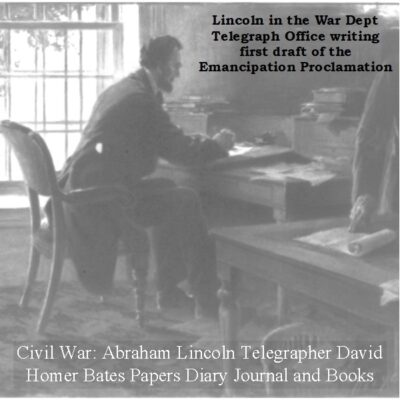
Abraham Lincoln’s Telegrapher David Homer Bates: Papers, Diary, and Books
$19.50 Add to Cart -
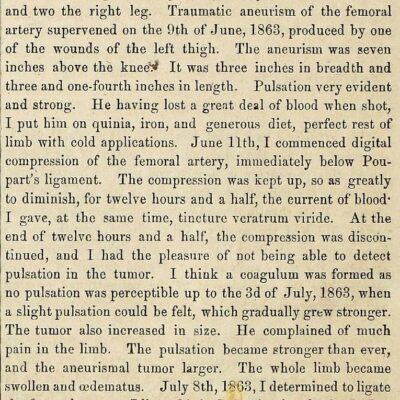
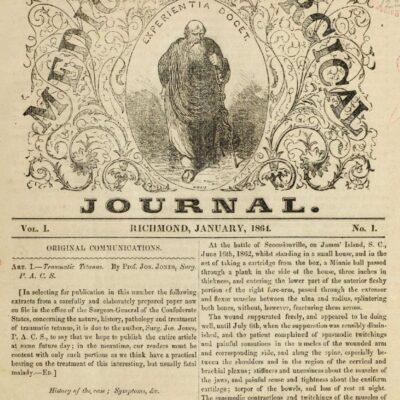
Civil War Confederate States Medical and Surgical Journal (1864 – 1865)
$19.50 Add to Cart -
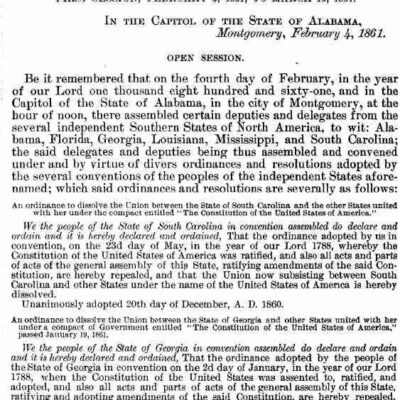
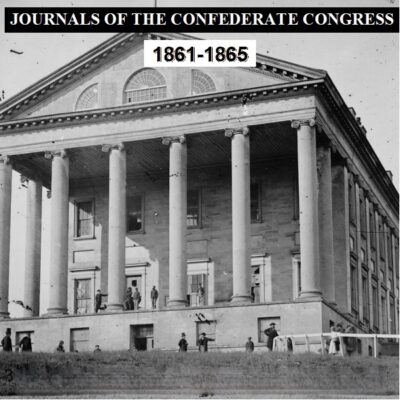
Journal of the Congress of the Confederate States of America 1861-1865
$19.50 Add to Cart -
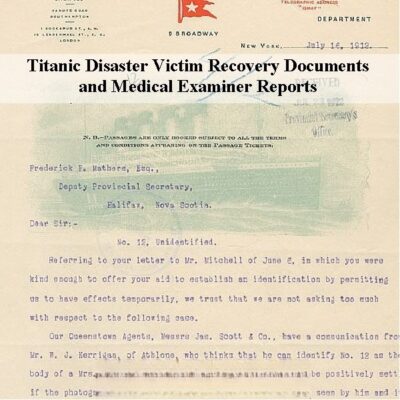
Titanic Disaster Victim Recovery and Medical Examiner Records
$19.50 Add to Cart